In 2015 the Fitzwilliam received an exceptional bequest of around 250 works on paper, paintings and applied arts items, the collection of Sir Ivor and Lady Batchelor. Since then, paper conservators and technicians at the Fitzwilliam have undertaken a project to conserve the drawings, watercolours and prints from the gift – documenting, treating and preparing them for archival storage and future display
The Collection
Professor Sir Ivor Batchelor (1916-2015) was an eminent psychiatrist, academic and advisor to the National Health Service. He developed a love of art as a boy and began a lifetime of amateur collecting, later sharing his passion with his wife Honor.1 They regularly made gifts to the Fitzwilliam throughout the 1990’s, notably enhancing the museum’s collection of drawings by James Ward. The 2015 bequest features predominantly British C19th and C20th drawings, prints and watercolours. Favoured artists include David Cox, Frank Brangwyn, Edwin Henry Landseer, David Wilkie, Muirhead Bone, William Orpen and Walter Sickert, as well as earlier works by James Ward, Heneage Finch, Thomas Rowlandson and others. It was the distinction of great draftsmanship, coupled with affordability, which dictated most of their purchases.
The Conservation Project
The works arrived at the museum in a variety of mounting and framing styles. The condition of the works varied: many were in reasonably good condition, while others had been visibly affected by factors such as light, humidity and contact with degraded mounting and framing materials. Some works (such as the drawings by Walter Sickert) are in themselves made of poor quality papers which show the effects of age much more quickly than better quality artist’s papers.2
Technicians in the Department of Paintings, Drawings and Prints unframed the works, photographing the frames and documenting inscriptions and labels on the frame backboards. The works were placed in folders and stored in archival boxes ready for accessioning by curators.3 Cataloguing in this case is being carried out alongside the conservation project – the process of unframing, examination and treatment sometimes reveals new information about the work, as can be seen in some of the examples discussed below.
Each work is thoroughly examined, photographed and documented by conservators before any treatments are undertaken (as well as during treatment). Many items in the Batchelor collection have only required the removal of old hinges and mounts, pressing and re-mounting.4 Others however have required more interventive processes, such as backing removal, stain reduction, washing and various types of repair.
Discovering a new drawing
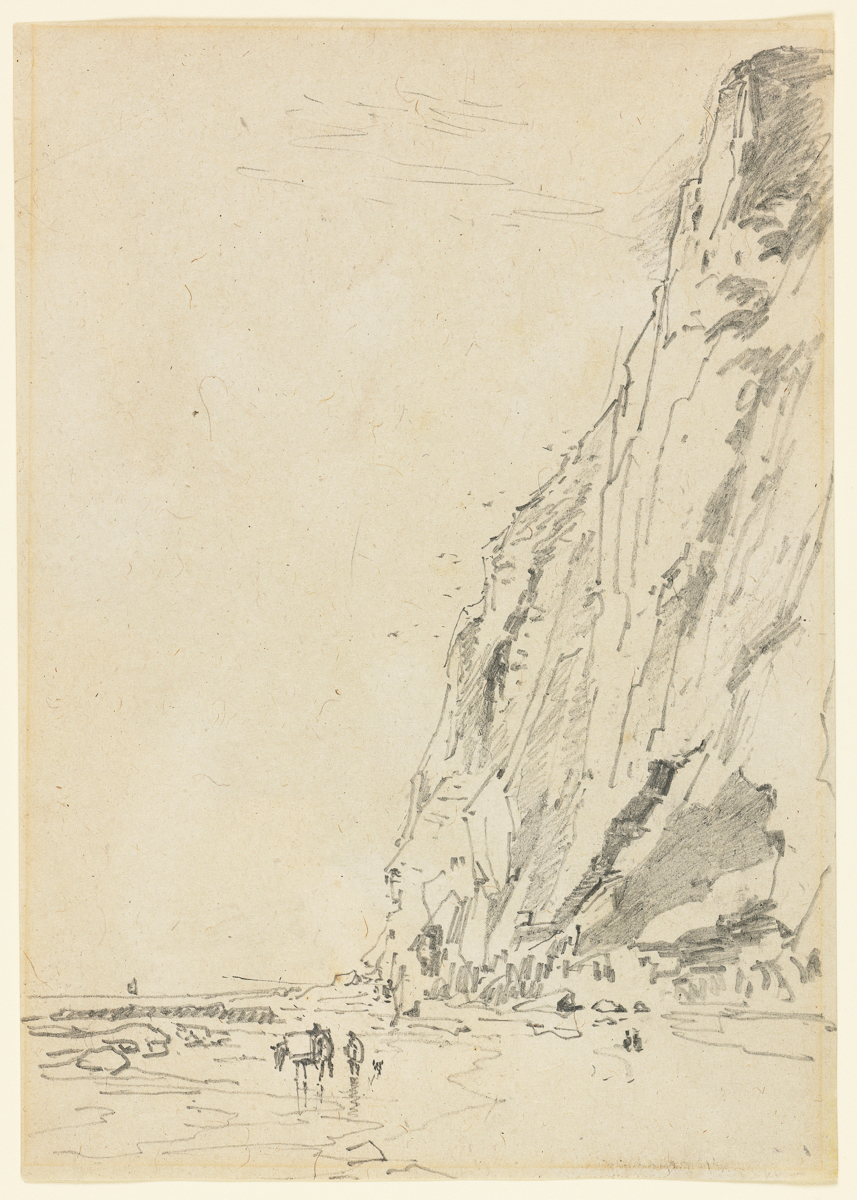
Removing this graphite drawing by David Cox (1783-1859) from its acidic backboard revealed another image on the reverse of the sheet – a roughly executed watercolour of a rocky landscape and some figures in pencil – probably dating from around the same time, as this page previously formed part of a sketchbook. Old adhesive was removed, the sheet was pressed and the work was mounted in a ‘double-sided mount’ so both sides of the paper can be viewed and also protected.5
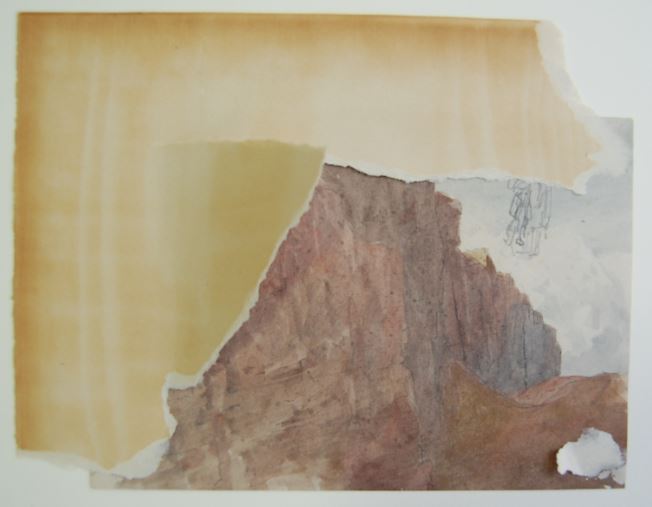
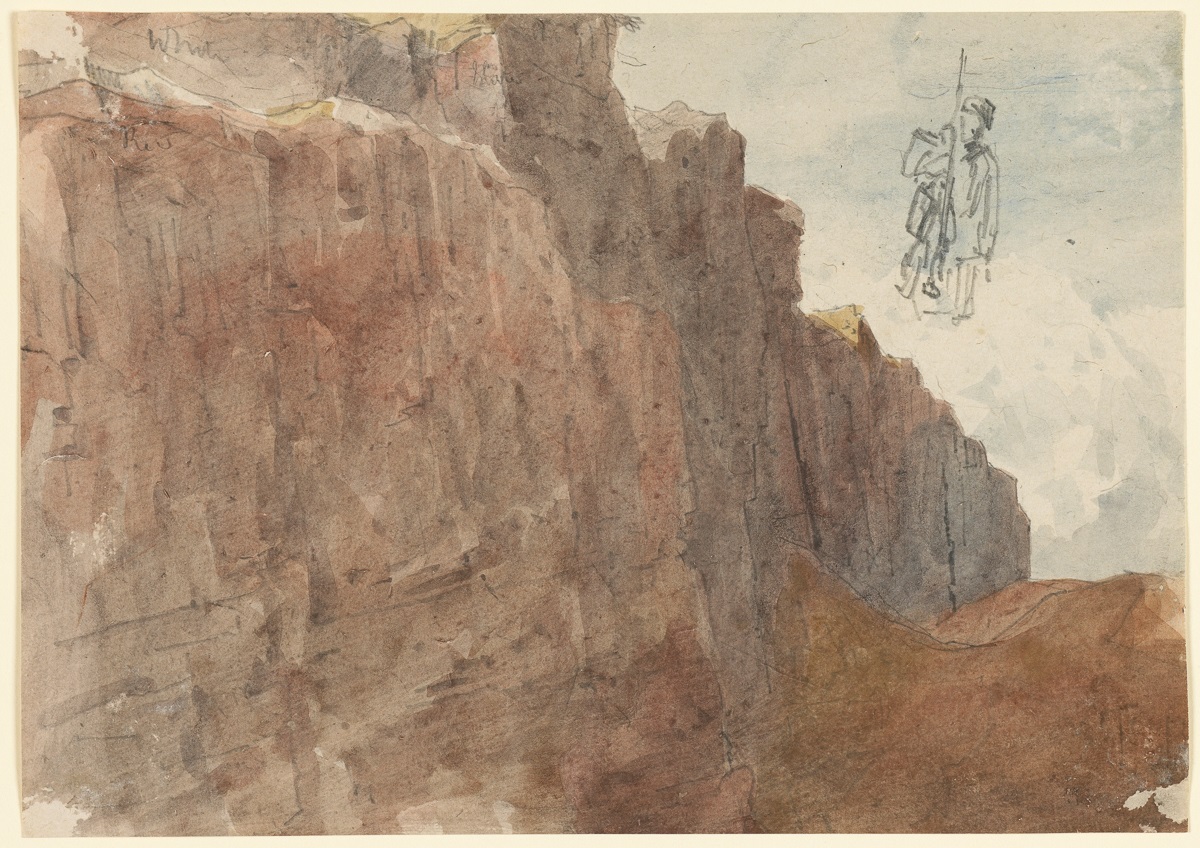
Doodles and marginalia
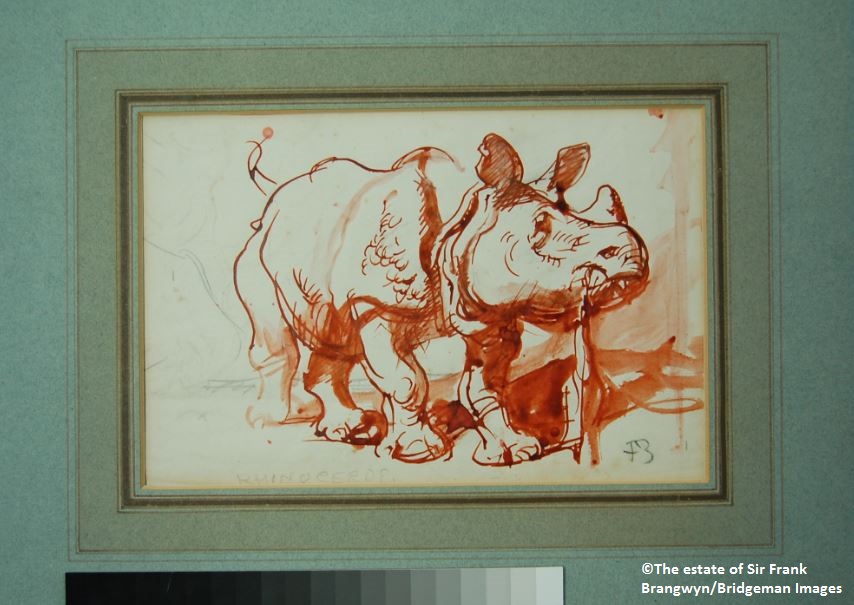
This studio drawing by Frank Brangwyn (1867-1956) was soiled and creased with some prominent stains caused by the old acidic window mount. The window also partly covered the artist’s inscription and completely obscured other interesting drawings around the edges of the paper. It was decided to remount the work showing the entire sheet. Due to the sensitive nature of the red ink, cleaning and stain reduction could only be done ‘locally’. The newly mounted sheet looks much less cramped and gives us greater insight into the way the artist worked.
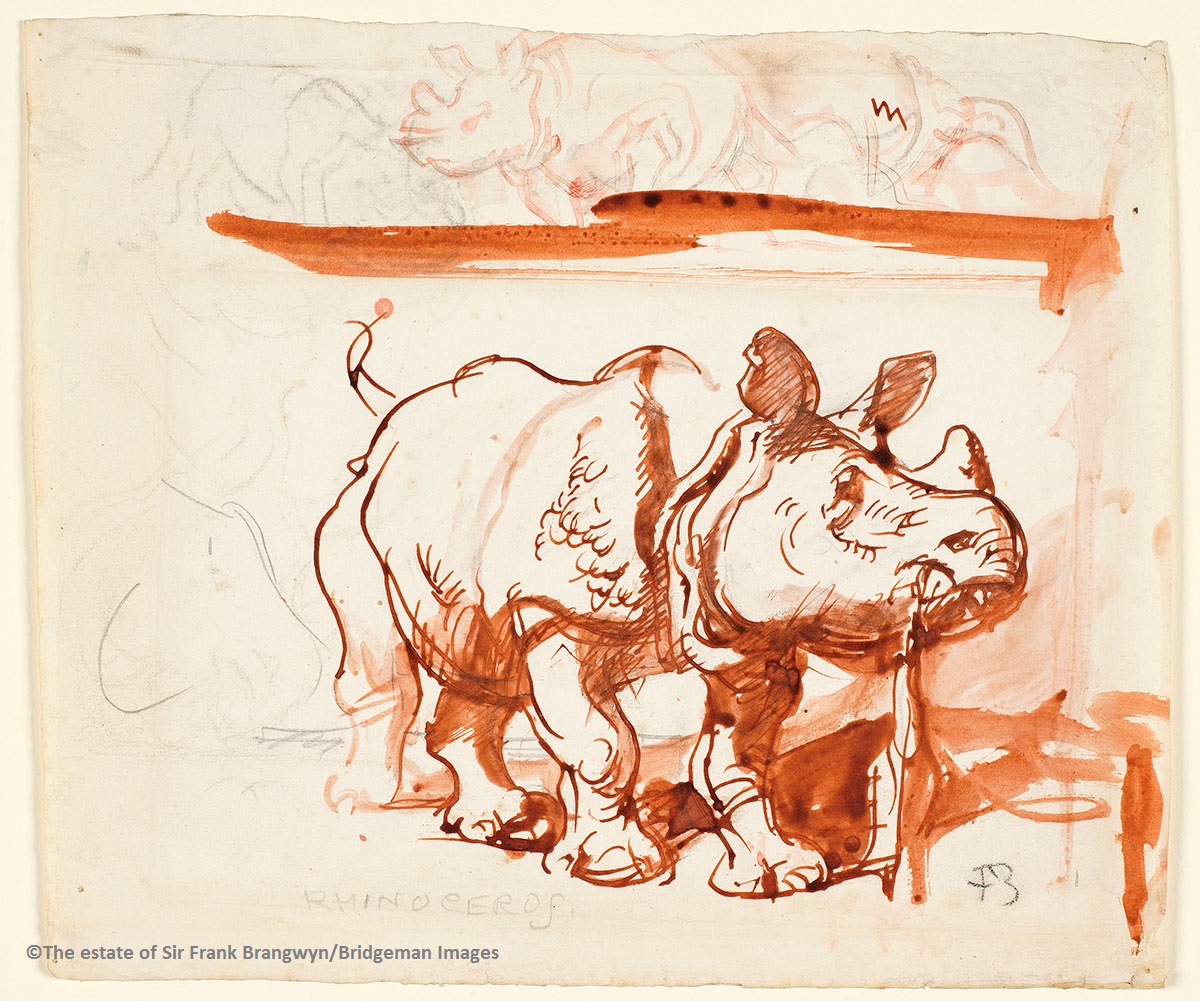
Out-foxing the Foxing
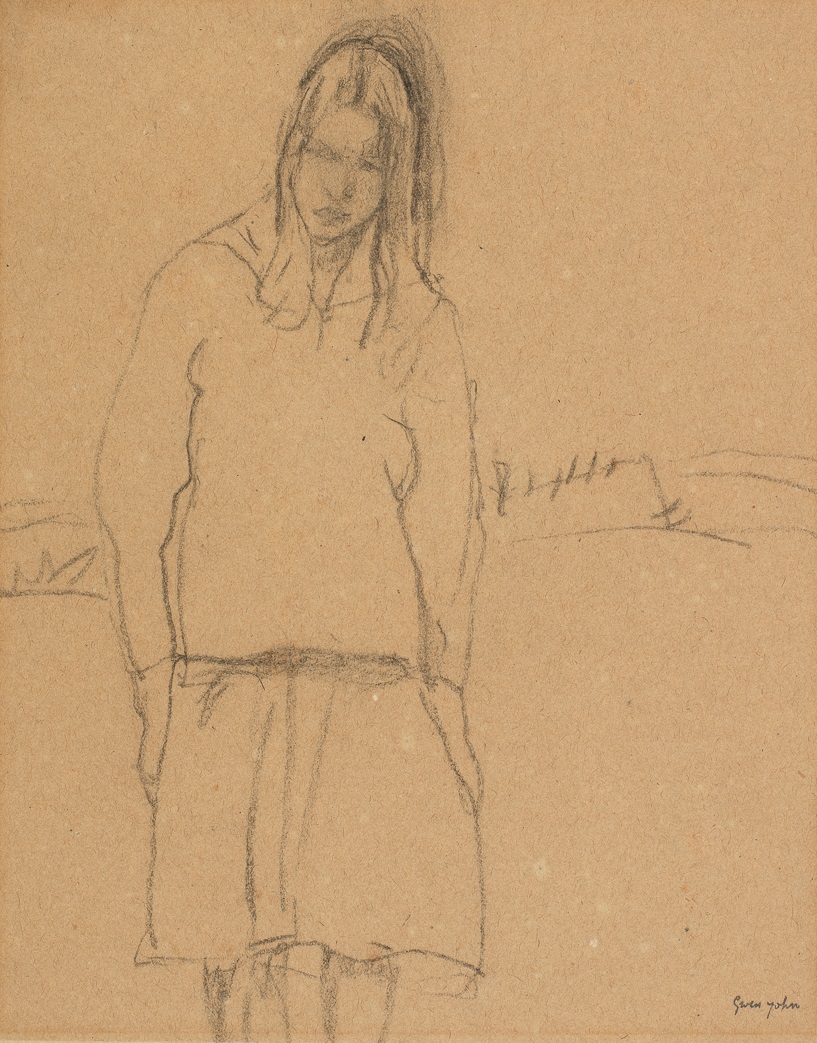
The chalk media of this drawing by Gwen John (1876-1939) was fresh and unfixed. However, the machine-made paper was poor-quality and severely discoloured overall. There were several disfiguring large brown stains, or ‘foxing spots’ scattered across the image area6 The spots were treated with water and alcohol followed by careful bleaching and a final rinsing. By using a ‘suction point’, the stain removal process was carefully controlled – the spots no longer detract from the delicately drawn image.
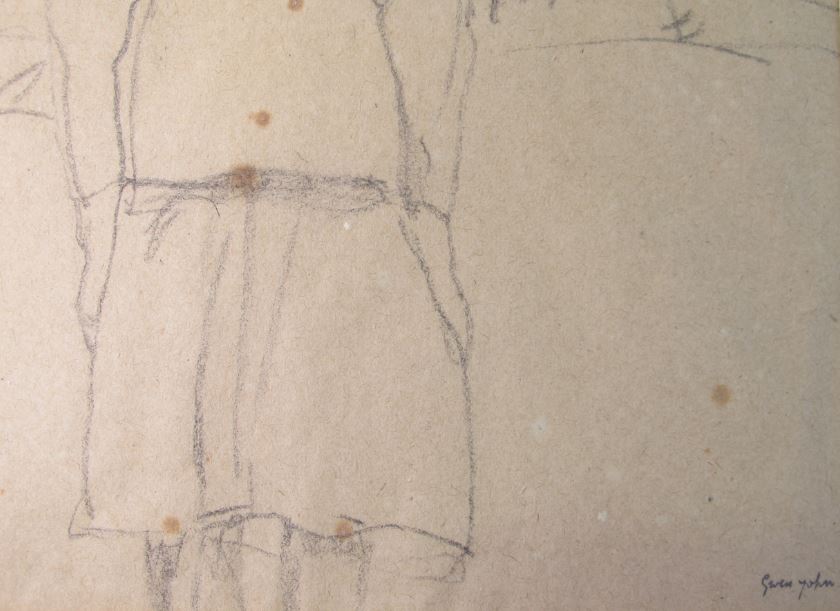
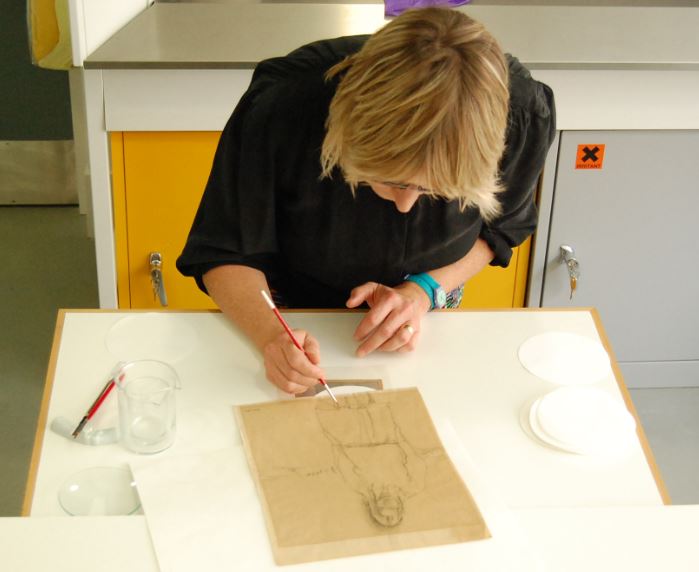
Emerging from the Darkness
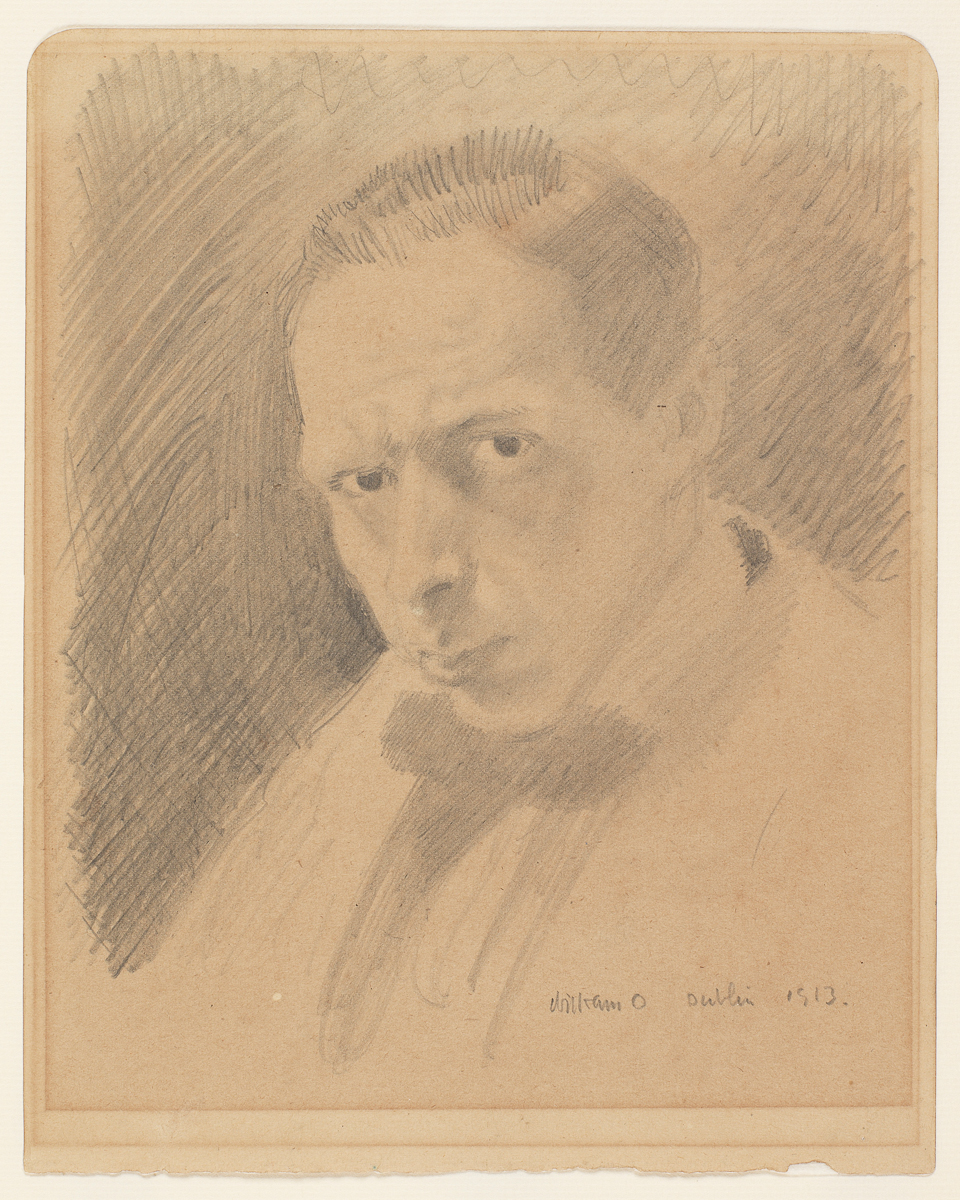
The buff-coloured sketchbook paper used by William Orpen (1878-1931) for this sketch was of an inherently poor quality and had become acidic, dark and brittle. The sheet was undulating and distorted from old self-adhesive tape holding it in place. After removal from the mount and testing of the media, the drawing was given several washes in cool then warm de-ionized water to release the acids and impurities and re-invigorate the paper. It was then lined with a carefully chosen light-weight Japanese paper and starch paste to provide the paper with extra strength and support for the future.
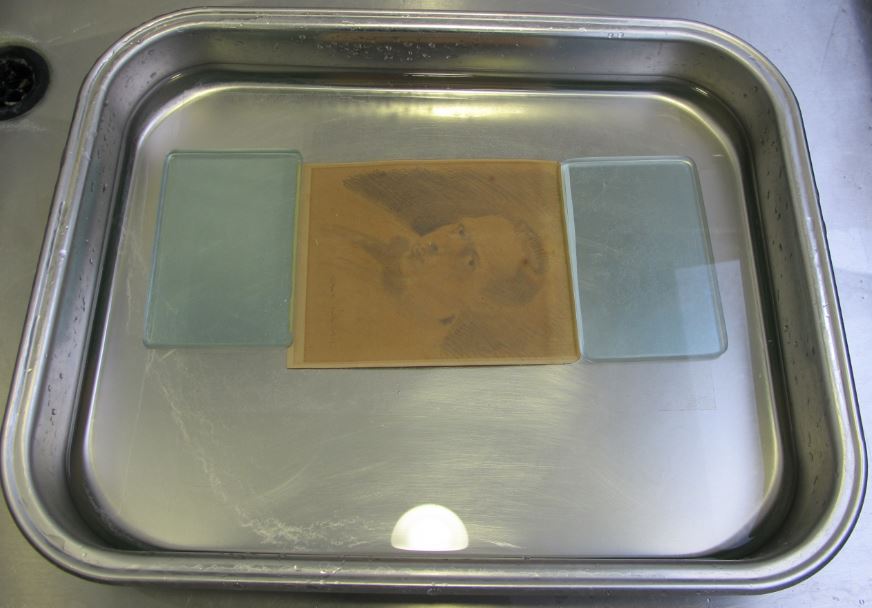
The Outcome
Whether the conservation work is preventive or interventive, the end result is gratifying – the treated works are now stabilized and ready to be accessed for viewing, display or loan. They are now protected by their new museum-quality acid-free mounts and are stored safely in high-quality Solander boxes.7 After treatment, high-resolution digital photographs are taken before the works are returned to the climate controlled Prints and Drawings store. The Batchelor Collection conservation project for works on paper is ongoing and there will be an exhibition of selected works from the collection at the Fitzwilliam in 2018.
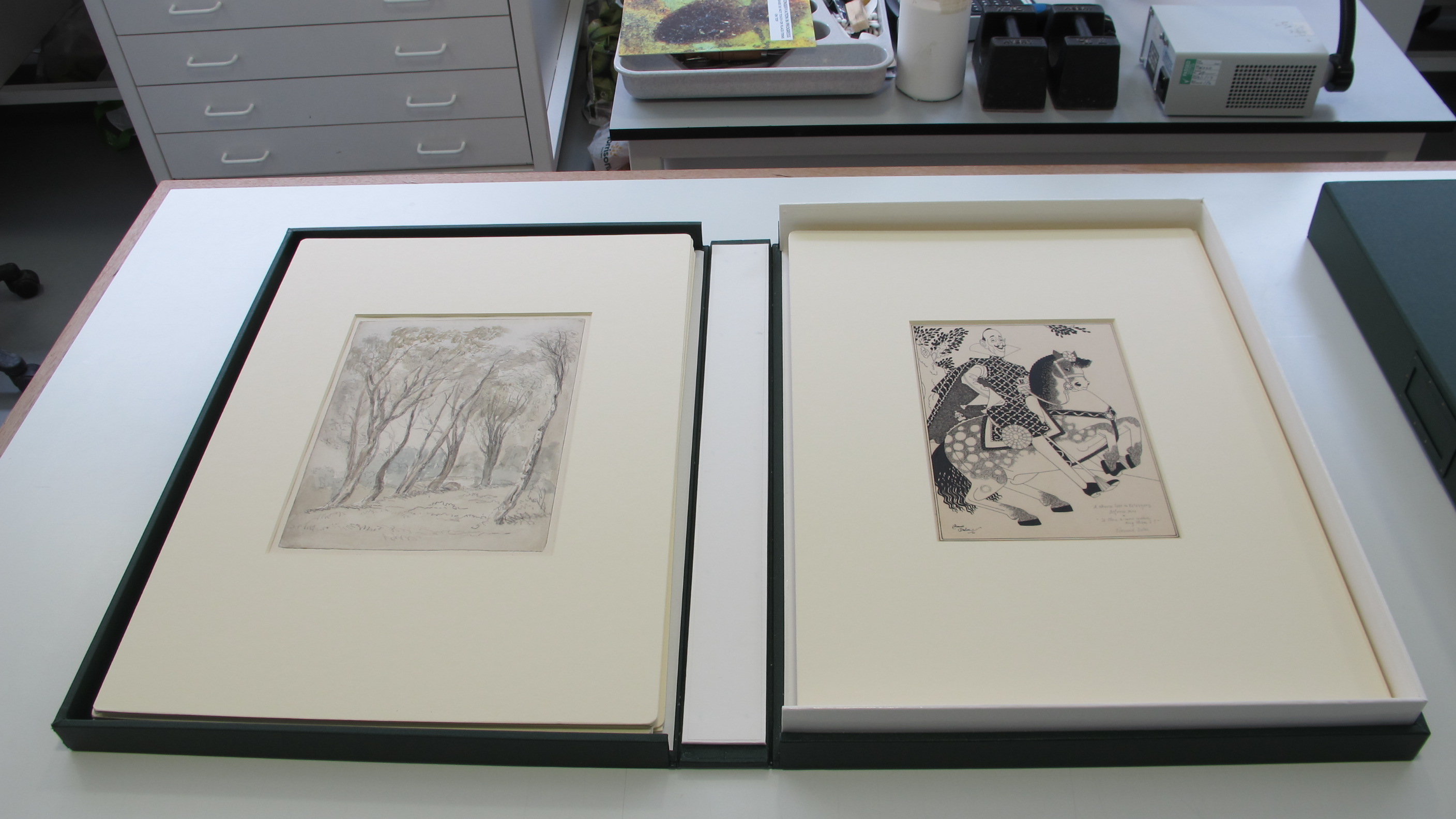
All images © The Fitzwilliam Museum, Cambridge unless otherwise credited.
With thanks to Richard Farleigh, Gwendoline Lemee and Jane Munro for their assistance.

